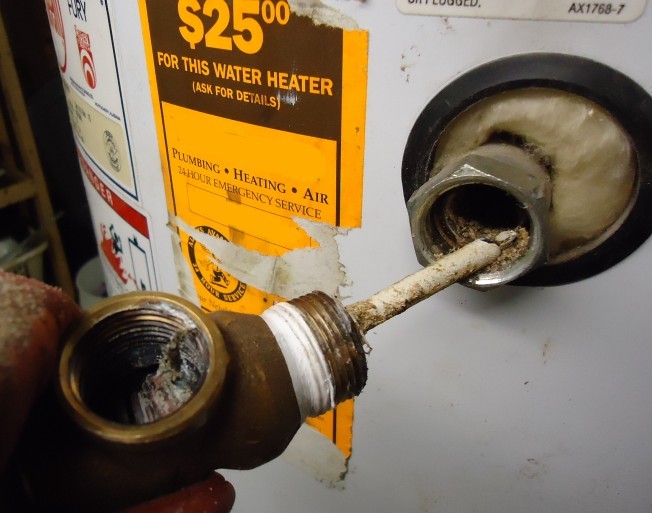What're your ideas regarding Tips on Maintaining a Water Heater?

Hot water is vital for everyday comfort, whether it's for a rejuvenating shower or washing dishes. To guarantee your warm water system runs effectively and lasts longer, normal upkeep is crucial. This short article provides sensible ideas and insights on just how to preserve your home's hot water system to prevent disruptions and pricey repair work.
Introduction
Maintaining your home's hot water system may seem daunting, yet with a few simple steps, you can ensure it operates smoothly for years ahead. This guide covers everything from recognizing your warm water system to do it yourself maintenance tips and recognizing when to hire professional aid.
Relevance of Maintaining Your Hot Water System
Regular maintenance not only extends the lifespan of your hot water system but also ensures it runs successfully. Neglecting maintenance can bring about decreased performance, greater power expenses, and even early failing of the system.
Indications Your Hot Water System Demands Upkeep
Understanding when your warm water system requires attention can avoid significant issues. Watch out for signs such as inconsistent water temperature level, strange noises from the heater, or rusty water.
Purging the Water Heater
Flushing your water heater eliminates sediment build-up, improving performance and extending its life.
Monitoring and Changing Anode Rods
Anode poles avoid corrosion inside the storage tank. Examining and replacing them when worn is essential.
Complicated Concerns Requiring Professional Assistance
Instances consist of significant leakages, electric troubles, or if your water heater is constantly underperforming.
Regular Expert Maintenance Benefits
Expert maintenance can include detailed evaluations, tune-ups, and guaranteeing compliance with safety and security standards.
Checking and Readjusting Temperature Level Settings
Readjusting the temperature settings makes sure optimum efficiency and safety.
DIY Tips for Upkeep
You can do several maintenance tasks yourself to maintain your warm water system in leading condition.
Checking for Leakages
Routinely inspect pipes and links for leaks, as these can cause water damage and greater costs.
Recognizing Your Hot Water System
Before diving right into upkeep jobs, it's useful to comprehend the fundamental components of your hot water system. Normally, this includes the hot water heater itself, pipes, anode rods, and temperature level controls.
Regular Monthly Upkeep Tasks
Normal month-to-month checks can help capture small problems prior to they escalate.
Evaluating Pressure Relief Valves
Examining the pressure safety valve ensures it operates correctly and prevents extreme stress build-up.
Protecting Pipes
Shielding warm water pipes reduces warmth loss and can conserve energy.
When to Call a Specialist
While DIY maintenance is beneficial, some concerns require specialist experience.
Verdict
Regular upkeep of your home's warm water system is necessary for efficiency, durability, and cost savings. By complying with these pointers and knowing when to look for expert aid, you can make certain a trusted supply of hot water without unanticipated interruptions.
How to Maintain an Instant Hot Water Heater
Before tinkering with your hot water heater, make sure that it’s not powered on. You also have to turn off the main circuit breaker and shut off the main gas line to prevent accidents. Also turn off the water valves connected to your unit to prevent water from flowing into and out of the appliance. 2. When you’re done, you have to detach the purge valves’ caps. These look like the letter “T†and are situated on either side of the water valves. Doing so will release any pressure that has accumulated inside the valves while at the same time avoid hot water from shooting out and burning your skin. 3. When the purge valves’ caps are removed, you have to connect your hosing lines to the valves. Your unit should have come with three hoses but if it didn’t, you can purchase these things from any hardware or home repair shops. You can also get them from retail stores that sell water heating systems. Read the user’s manual and follow it to complete this task properly. When the hosing lines are connected, open the purge port’s valves. 4. You should never use harsh chemical cleaners or solutions when cleaning your unit. Make use of white vinegar instead. It should be undiluted and you’ll probably use about 2 gallons. 5. Now flush your water heater. This task should probably take about 40 minutes. We can’t give you specific directions for this because the procedure is carried out depending on the type, model and brand of your heater. With that being said, refer to the user’s manual. 6. When you’re done draining the unit, you have to turn off the purge port valves again. Remove the hosing lines that you earlier installed on each of the water valves. Put the valve caps (purge port) back in their respective places and be very careful so as not to damage the rubber discs that are found inside these caps. 7. Now that everything’s back in place, check your user’s manual again to find out how to reactivate your water heating system. 8. Once it is working, turn one of your hot water faucets on just to let air pass through the heater’s water supply pipes. Leave the tap on until water flows smoothly out of it. https://www.orrplumbing.com/blog/2014/september/how-to-maintain-an-instant-hot-water-heater/

I'm very involved in Tips For Maintaining Your Hot Water Heater and I really hope you liked our blog posting. Enjoyed our post? Please quickly share it. Let others discover it. Thank-you for going through it.
Maintenance Sign-Up